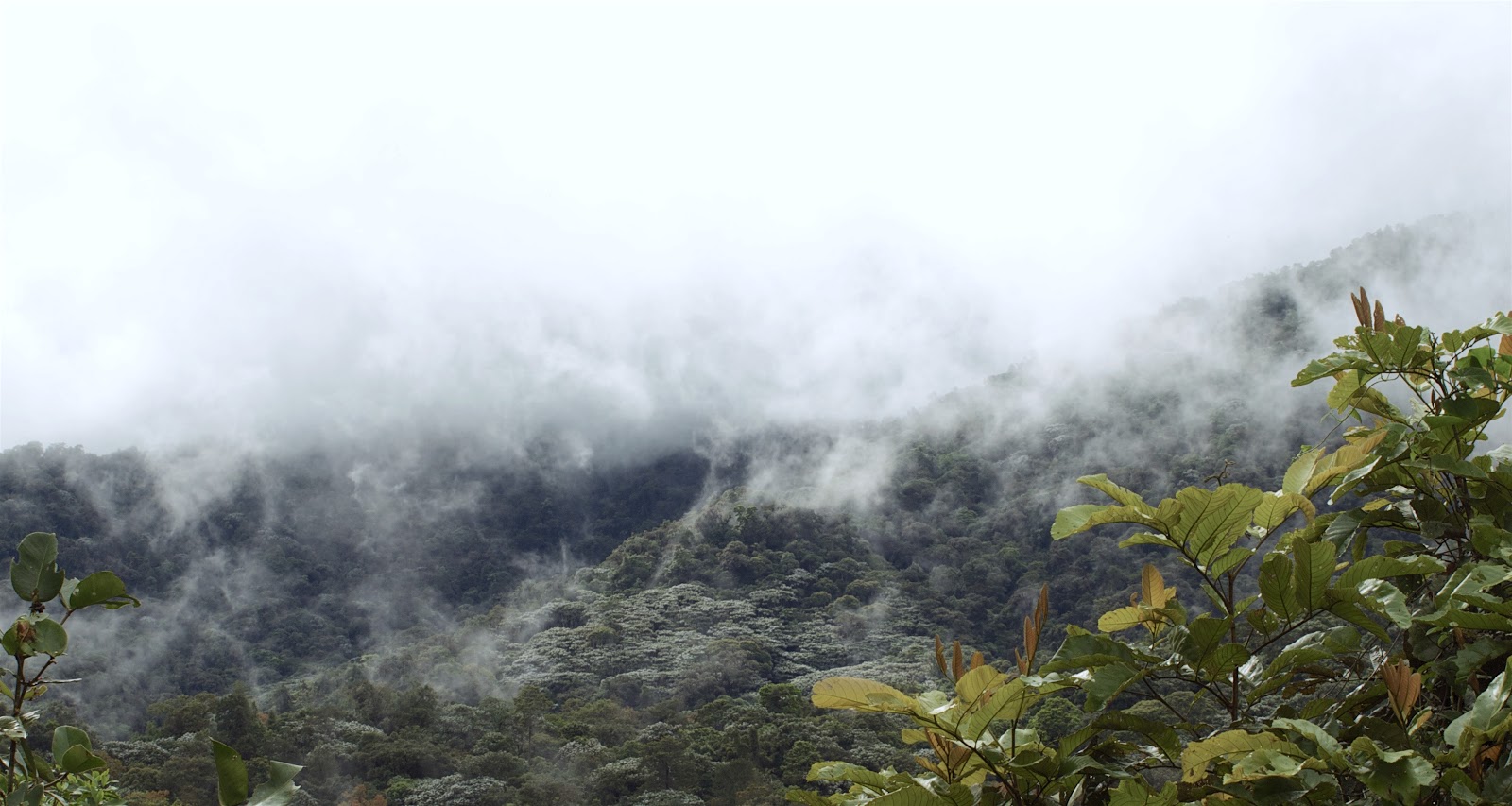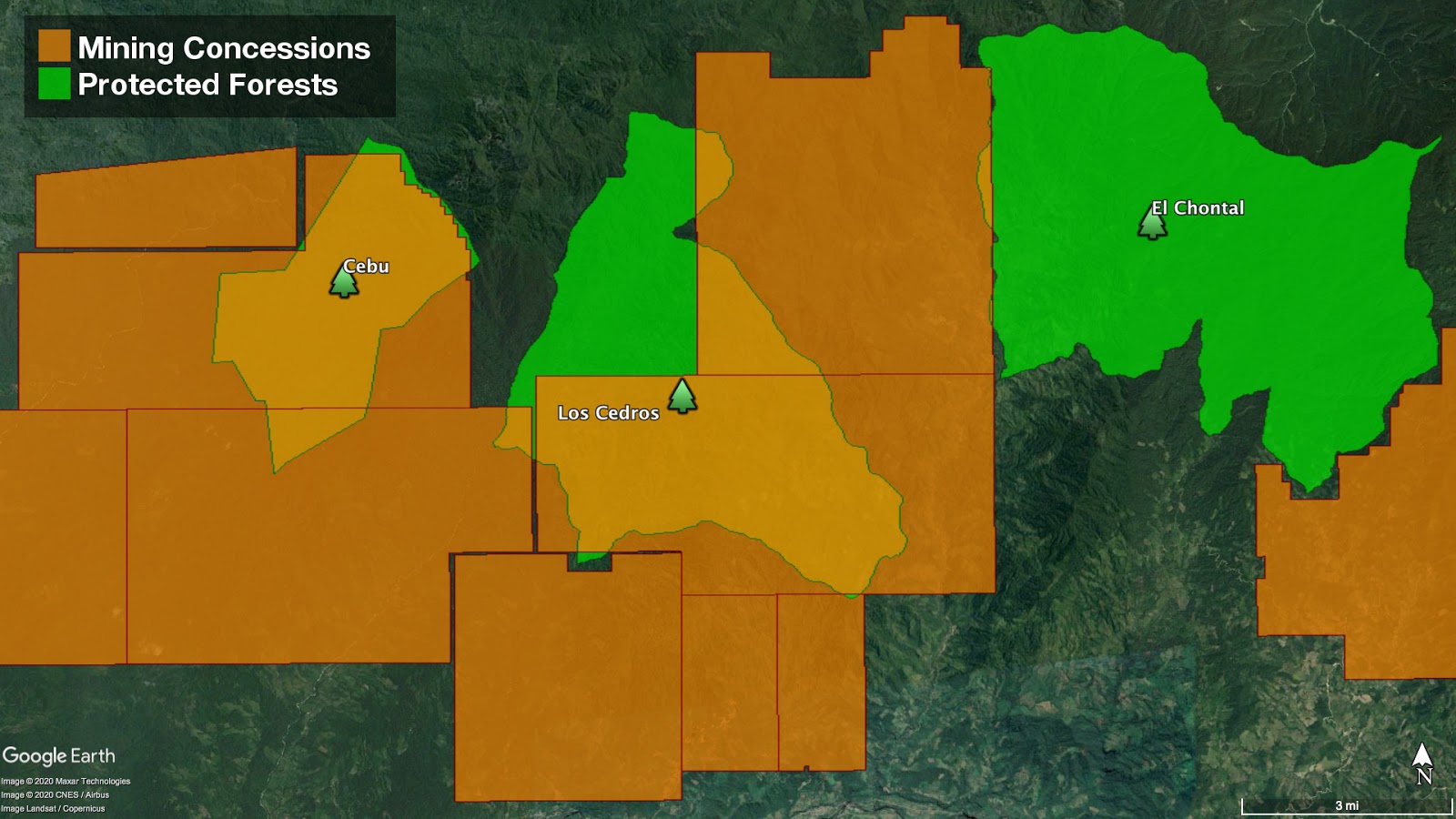New research conducted at Los Cedros Reserve provides insights into plant-fungi symbiosis
Researchers have shown that dozens of species of fungi that live symbiotically within the leaves of plants are able to change their biology to decay wood; this new research provides insights into a mysterious form of symbiosis called endophytism. The research was conducted at Los Cedros Reserve, a protected forest in northern Ecuador threatened by mining development.
EUGENE, OR — New research published this week in the internationally acclaimed journal PeerJ from scientists at the University of Oregon’s Institute of Ecology and Evolution provides new insights into the mysterious form of symbiosis known as endophytism.

“Endophytes are fungi that live within the leaves and stems of plants, but they don’t cause any disease,” explains Professor Bitty A. Roy, who supervised the research project. “Just like humans have a microbiome composed of thousands of species of bacteria in our guts, plants have a microbiome, too. But the most important players in the plant’s microbiome seem to be the fungi, and we’re really just learning how important these fungi are.”
“Essentially, what this research showed is that some endophytes can transfer out of the leaves and become wood decay fungi,” says Aaron Nelson, one of the lead researchers on the study and a McNair Scholar, “so they’re not trapped in the leaves, and being an endophyte doesn’t mean that they can’t be something else, too.”
Dr. Roo Vandegrift, a postdoctoral scholar at the University of Oregon and the scientist who designed the study, says, “On the surface, it seems really simple: some fungi can grow out of leaves and into wood, changing their ecology from symbionts to decay fungi in the process. This has huge implications for how we understand symbiosis ecology: it shows that symbioses can be a route towards something else, a means of dispersal.”
The research team showed that dozens of species of fungi were able to make the switch from leaf symbionts to wood decay fungi. This led the team to consider the idea that fungi may use the mysterious endophytic symbiosis with plants as part of a dispersal strategy, using leaves like lifeboats to escape unfavourable conditions.
A history of research & unprecedented biodiversity
This research is part of an ongoing research program from Professor Roy’s lab at the University of Oregon. “We have been working at the Los Cedros Protected Forest since 2008,” explains Professor Roy, “when we began researching pollination in mushroom-mimicking orchids.”
And it’s not just Professor Roy’s lab that has been performing cutting-edge research at the Los Cedros Protected Forest. “There have been more than a hundred peer-reviewed scientific papers published about research at Los Cedros,” says Elisa Levy, the Research Coordinator for the Los Cedros Scientific Station. “We’ve had researchers come here from all over the world, including some of the top scientists here in Ecuador.”
“Reserva Los Cedros is well known for its globally critically endangered brown-headed spider monkeys and endangered spectacled bears,” explains Professor Roy, “but there are at least 207 species at Los Cedros that are under threat according to Ecuador’s red lists. This includes 70 near threatened, 103 vulnerable to extinction, 29 endangered and 5 critically endangered species.”
“Research at Los Cedros is constantly discovering new species for science,” continues Levy. “There have been new species of plants, frogs, insects, and fungi all discovered at Los Cedros, just in the last few years. There have been 21 species of orchid described from Los Cedros to date, for example. And we’ve barely scratched the surface: it’s not just the known endangered species that Los Cedros protects, but this huge amount of unknown life, much of which is probably rare and likely to be in danger of extinction.”
Los Cedros: a protected forest under threat
Elisa Levy explains the threat to the Los Cedros Protected Forest: “In 2017, the Ecuadorian government announced new concessions for mining exploration on over 2.9 million hectares (>6 million acres) of land, a roughly 300% increase. Many of these exploratory concessions are in previously protected forests and indigenous territories, as well in headwater ecosystems and biodiversity hotspots of global importance, like Los Cedros.” She goes on to say, “and, they appear to be in violation of Ecuadorian law and international treaties.”

As part of this rapid mining expansion, Canadian mining company Cornerstone Capital Resources was given a permit for gold mining at Los Cedros in collaboration with the Ecuadorian state mining company, ENAMI. These concessions were granted despite the Ministry of Environment’s own publication citing Los Cedros in its ‘Areas of Priority for the Conservation of Biodiversity in Ecuador’ and the recognition of Los Cedros by the International Union for the Conservation of Nature (IUCN) as a ‘Key Biodiversity Area’ (KBA). Levy points to the “apparent conflict between the different branches of the Ecuadorian government”.
“It is scientifically proven that the exploration and exploitation phases of mining decrease biodiversity,” explains Dr. Vandegrift, citing previous research, “primarily through road construction, deforestation, and associated river sedimentation and contamination.”
In response to the threat of mining at Los Cedros, Dr. Vandegrift and colleagues, including Elisa Levy from Ecuador, led a National Geographic Society funded expedition deep into the Los Cedros Protected Forest last year. “We have to document these species now, because there will be extinctions if a mine is opened here,” explains Dr. Vandegrift. “We already know that there are over 200 species at Los Cedros in danger of extinction, but the undocumented, undiscovered life that is here very likely dwarfs that. And there are no protections for species that haven’t yet even been described.”
Dr. Vandegrift’s National Geographic expedition will be featured in the forthcoming documentary film, Marrow of the Mountain, which tells the story of Ecuador’s rapid mining expansion from the perspective of predominantly rural and indigenous women.
The Los Cedros Protected Forest authorities turned to the courts to fight this mining permit. They won their case for an Action of Protection in the Provincial Court of Imbabura in June 2019, which stripped the mining company of their operating permits. The government, working alongside the mining companies, subsequently appealed against the decision. Meanwhile the mining company, despite overwhelming opposition in the region, has continued operations in direct contravention of the court order and without the appropriate permits.
The scientific community stands in overwhelming support of Los Cedros, opposing mining development within this and other protected forests in Ecuador. A petition launched by the Center for Biological Diversity in July has been signed by over 1200 scientists, including luminaries such as EO Wilson, Jane Goodall, Peter Raven, and Rosemary and Peter Grant. The signatories expressed their concern about mining within Ecuador’s exceptionally diverse protected forests, and specifically requested that all mining concessions be removed from such protected forests (“bosques protectores”), including Los Cedros.
The Ecuadorian Constitutional Court agreed in May to hear the case based on the Rights of Nature enshrined in the Constitution. The Constitutional Court said that it hoped to set a precedent concerning mining in Protected Forests using the Rights of Nature. The Court specifically cited the biodiversity at Los Cedros, and the presence of “the last populations of the spider monkey in a critical state of conservation, and the Andean (spectacled) bear [which is] in danger of extinction”.
FOR MORE INFORMATION:
A Nelson, R Vandegrift, GC Carroll, BA Roy. 2020. Double lives: transfer of fungal endophytes from leaves to woody substrates. PeerJ 8:e9341. doi.org/10.7717/peerj.9341
Dr. Roo Vandegrift, +1 540-588-4101, awv@uoregon.edu
Jose Cueva +593 99 9347230, intaglibre@gmail.com (in Ecuador)
